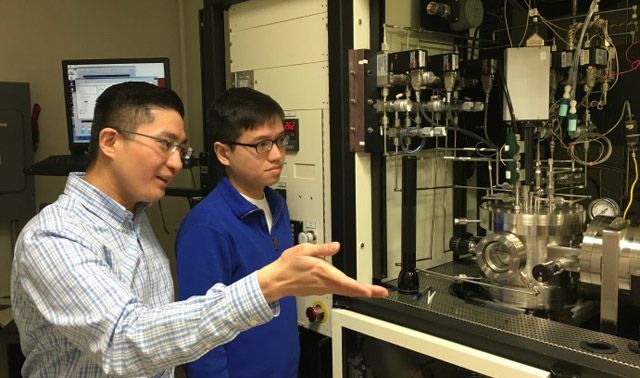Chee-Keong Tan has not yet completed his Ph.D. in electrical engineering, but he has already made his mark in the field of solid state lighting and the light-emitting diodes (LEDs) that outperform fluorescent and incandescent lighting in energy efficiency.
Tan is author or coauthor of more than 50 articles published in refereed technical journals and conference proceedings, including Nature Nanotechnology and Scientific Reports of the Naturepublishing group. Many of the articles discuss the unique optoelectronic properties of the novel semiconductor materials he has discovered, and their potential for improving the light-generating efficiency of LEDs by attracting electrons and holes in the active region.
One of those materials—a compound of arsenic, gallium and nitrogen known as dilute-As GaNAs—is believed to have advantages over the conventional indium gallium-nitride (InGaN) used for visible light emission. Tan and other researchers have proposed diluting GaN with small amounts of arsenic to boost the intensity of all three colors, especially the red.
Last year, Tan received an Optics and Photonics Education Scholarship from SPIE, the international society for optics and photonics. In February, after winning a poster competition, Tan and six other students in the United States were invited to give a presentation to the U.S. Department of Energy’s 2016 Solid State Lighting R & D Workshop in Raleigh, North Carolina. Tan’s research was cited for its novelty and significance.
In his research, Tan employs first-principle calculations and advanced band modeling to investigate the band structures and the electronic and optical properties of materials. He designs novel semiconductor materials and nanostructures that enhance LED performance. In one project, he couples dilute-As GaNAs with InGaN to form a unique active region structure for visible light emission. This brings electrons and holes into closer proximity, enabling them to recombine more efficiently.
In an article published in January in Scientific Reports, Tan reported that the addition of a layer of dilute-As GaNAs at the quantum level showed “high potential…for achieving high-efficiency nitride-based LEDs in the red spectral regime.”
The article, titled “InGaN/Dilute-As GaNAs Interface Quantum Well for Red Emitters,” was coauthored with Nelson Tansu, Tan’s adviser, and with Wei Sun and Damir Borovac ’15, who are Ph.D. candidates in electrical engineering. Tansu is the Smith Family Endowed Director of the Center for Photonics and Nanoelectronics (CPN).
Read the full story at the Lehigh University News Center.
-Kurt Pfitzer is Manager of Editorial Services with Lehigh University's Office of Communications and Public Affairs.

